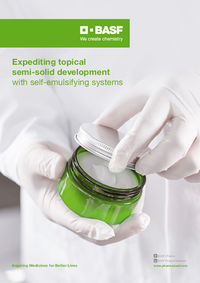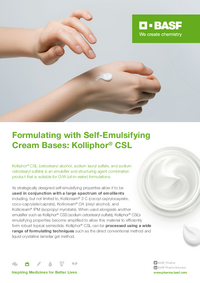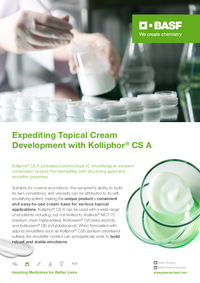Formulating Topical Semisolids with Self-Emulsifying Systems
Lipid-based pharmaceutical excipients are frequently utilized in topical semisolid dosage forms due to their versatility and multifunctionality. Despite their long history of use, lipid-based pharmaceutical excipients continue to challenge beginner and expert formulators alike as these materials must be carefully balanced in often complex mixtures to achieve efficacious dermal drug delivery. To investigate the how to leverage lipid-based excipients to build stable and cosmetically elegant topical formulations, BASF has partnered with Mark Chandler of ACT Solutions Corp. We are pleased to have Mark take part in our webinar and present his work on using various stabilization techniques to address formulation challenges through the application of co-processed, self-emulsifying systems.
Key Learnings:
- Understand the role the emulsifier plays in stabilizing topical semisolid systems.
- Differentiate steric, liquid crystalline lamellar gel network, and electrostatic stabilization systems.
- Apply knowledge to formulate with self-emulsifying systems.






